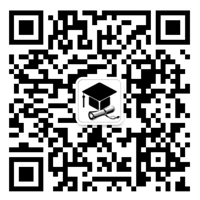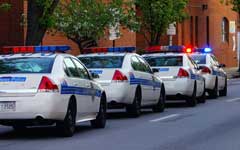| 一对一私人定制,全程指导与服务 |
浏览位置:主页 > 法学论文 > 法学硕士论文 >
商标反向混淆问题的解决策略研究
2021-08-23 17:43法学硕士论文 人已围观 作者:周老师 来源:学术堂
简介商标反向混淆理论起源并发展于美国司法判例,与传统的正向混淆在权利人的损害赔偿认定、侵权人的主观意图、消费者混淆方向等方面存在诸多差异,故侵权人的民事责任承担与正向混淆也理...
第1部分 商标反向混淆问题的解决策略研究
第2部分 商标反向混淆理论溯源
第3部分 商标反向混淆的认定
第4部分 反向混淆的反不正当竞争法解决
第5部分 反向混淆的商标法解决
第6部分 我国商标反向混淆的解决现状及机制完善
第7部分 商标反向混淆解决机制构建结语与参考文献
摘 要
商标反向混淆理论起源并发展于美国司法判例,与传统的正向混淆在权利人的损害赔偿认定、侵权人的主观意图、消费者混淆方向等方面存在诸多差异,故侵权人的民事责任承担与正向混淆也理应有别,不能简单地完全套用正向混淆的解决机制来处理反向混淆案件。反向混淆的解决既要保护好商标权利人利益,又要维护消费者权益,同时也要兼顾效率与公平。本文从美国司法判例入手,先认识商标反向混淆,再认定反向混淆侵权的成立要件和责任承担,最后“对症下药”,探究反向混淆相应解决机制。
本文第一部分论述商标反向混淆的理论溯源,包括反向混淆的发展历程和禁止反向混淆的法理基础两部分。反向混淆经历了不被接受--开始关注--逐渐认可的发展历程,这个历程通过标志性的司法判例“野马(Mustang)”商标案、“大脚(Big Foot)”商标案和“Bee Wear”商标案来展现。禁止反向混淆的法理基础,包括公平和效率两个方面。
认识反向混淆是什么后,本文第二部分就着重探讨什么样的情形构成反向混淆侵权、反向混淆成立后应承担什么样的责任,为下文相对应的解决机制的探讨作好铺垫。
本文第三部分从反不正当竞争法的角度来解决商标反向混淆。商标混淆本质上属于不正当竞争行为,美国早期的商标纠纷案件,一般都通过反不正当竞争法的原理解决。
但反不正当竞争法要求行为人必须具有侵权的主观过错,而反向混淆中原告往往很难证明侵权者过错,此时反不正当竞争法的弊端就显露无遗。
本文第四部分从商标法的角度解决反向混淆问题。商标侵权行为的认定上,商标法不要求侵权人具备主观过错,通过商标法解决反向混淆具有充分的理论和法律依据。在解决模式的选择上,法院的个案判决应兼顾公平与效率;引进商标双重使用和商标共存协议具有可行性,但应防止侵害公共利益;借鉴民法添附制度更突出了效率价值。
本文第五部分介绍我国商标反向混淆的解决现状及完善建议。我国商标法对反向混淆没有明确规定,也没有否认其侵权本质,司法实践对反向混淆案件的解决进行了有益探索。商标法关于反向混淆的侵权认定、责任承担仍需明确,司法实践也可引进权利通约理论,促成当事人“交换协议”的达成。
关键词:商标, 反向混淆, 解决机制, 商标共存, 添附。
Abstract
Trademark reverse confusion theory of the origins and develops of the jurisprudence in theUnited States, with the traditional forward confuse people, there are many differences in the rightsrecognized damages, the infringer's subjective intent, direction and other aspects of consumerconfusion, the infringer's civil liability there should also be confused with another forward, so wecan't simply be applied entirely positive resolution mechanism to deal with reverse confusion case.
The solution of the reverse confusion should not only protect the trademark holder of interests, butalso safeguard the interests of consumers, while also take into account the efficiency and fairness.
This article from the American jurisprudence to start, firstly get to know the trademark reverseconfusion , and then finds the reverse confusion infringement established requirements andresponsibilities , and finally “right” to explore the reverse confusion corresponding settlementmechanism.
The first part of this article discusses the theory of reverse confusion trademark traceability,including reverse confusion of the development process and the legal basis to prohibit reverseconfusion. Reverse confusion experienced the development process of not to be accepted - startedto be paid attention - gradually to be recognized, this journey through iconic jurisprudence“Mustang (Mustang)” trademark case,“ Bigfoot (Big Foot)” trademark case and “Bee Wear ”
trademark case to show off. The legal basis to prohibit reverse confusion includes both equity andefficiency.
Knowing what the reverse confusion is, the second part of this paper focuses on whichsolution constitutes a reverse confusion infringement case, and then what kind of responsibilitythe reverse confusion should bear , as discussed below, the corresponding resolution mechanismsto pave the way .
The third part from the perspective of the Anti-Unfair Competition Law to resolve trademarkreverse confusion. Trademarks belong to confuse the nature of unfair competition, the UnitedStates earlier trademark disputes, usually by anti-unfair competition law principles to solve.
However, the Unfair Competition Law requires that the perpetrator must have subjective faultinfringement, while the demandant is often difficult to prove confusing infringers' fault, then theAnti-Unfair Competition Law's drawbacks were revealed.
The fourth part of this article solve the problem from the perspective of Trademark Law. TheTrademark Law does not require the infringer' subjective fault to identify the trademarkinfringement, there are sufficient theoretical and legal basis to resolve reverse confusion throughthe Trademark Law. In selecting solving model based on the judgment of the court cases should beboth fair and efficient; the introduction of dual-use trademark and trademark coexistenceagreement is feasible, but should prevent against the public interest; learning more prominent civillaw accretion highlights the efficiency value.
The fifth section of this article describes the current situation of China's trademark reverseresolve confusion and suggestions for improvement. Our trademark law does not specify on thereverse confusion, also not deny its infringing nature, the judicial practice of the reverse confusioncase solved makes a lot of useful exploration. The Infringement and responsibility of the reverseconfusion should be made clear by Trademark Law, the Exchange Entitlement Thesis should beintroduced by judicial practice to contribute to the parties' “exchange agreement” being reached .
Key Words:Trademark, Reverse Confusion, Settlement Mechanism, Coexistenceof Trademark,Accessio
目 录
引 言…… 1
1 商标反向混淆理论溯源 …… 3
1.1 商标反向混淆理论的发展脉络…… 3
1.1.1 反向混淆开始走进司法视野--“野马(Mustang)”商标案 …… 3
1.1.2 商标反向混淆的司法确立--“大脚(Big Foot)”商标案…… 4
1.1.3 禁止反向混淆的目的--“Bee Wear”商标案…… 5
1.1.4 商标反向混淆的基本特征…… 5
1.2 禁止商标反向混淆的法理基础…… 6
1.2.1 基于公平角度之一:反向混淆损害在先商标权利人利益…… 6
1.2.2 基于公平角度之二:误导消费者 …… 6
1.2.3 禁止反向混淆的效率考量…… 7
2 商标反向混淆的认定…… 9
2.1 反向混淆的侵权认定…… 9
2.1.1 原告商标具有可保护性 …… 9
2.1.2 消费者出现认知混淆…… 9
2.1.3 在后商标使用人的市场地位优于在先商标权利人 ……11
2.2 反向混淆的责任认定……12
2.2.1 禁令……12
2.2.2 损害赔偿……13
3 反向混淆的反不正当竞争法解决 ……16
3.1 适用反不正当竞争法的依据 ……16
3.1.1 理论依据……16
3.1.2 法律依据……16
3.2 适用反不正当竞争法的不足 ……17
4 反向混淆的商标法解决 ……19
4.1 适用商标法的依据 ……19
4.1.1 理论依据……19
4.1.2 法律依据……20
4.2 解决反向混淆的模式选择……20
4.2.1 法院根据个案判决 ……20
4.2.2 商标共存……22
4.2.3 借鉴民法“添附制度” ……27
5 我国商标反向混淆的解决现状及机制完善 ……31
5.1 我国反向混淆的解决现状……31
5.1.1 立法解决现状 ……31
5.1.2 司法解决现状 ……32
5.2 我国反向混淆解决机制的完善……34
5.2.1 明确商标反向混淆的侵权认定……34
5.2.2 明确反向混淆的民事责任承担……35
5.2.3 司法实践中引进权利通约理论……35
6 结语……38
参考文献 ……39
致 谢 ……43
下一篇:我国养老服务体制的健全研究
| 追求精品,专业为根,诚信为本 |






